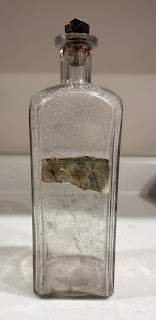There was a guy from Marietta in the Capitol Rotunda at President Trump's inaugural. You did not hear or see him in the mainstream or social media. He did not speak, but was likely listening and watching. Who was this man? Rufus Putnam, our founder. He stands watch over the proceedings in the Capitol Rotunda, along with other Revolutionary War patriots, in the painting by John Trumbull "Surrender of General Burgoyne." Putnam is immediately to the right of the man in white, shown in the close-up photo.
After that, Rufus Putnam lived a comfortable life in Rutland, Massachusetts but was inspired by the opportunity for a new life in the Ohio Country. The creation of the Northwest Territory in 1787 paved the way for western U. S. expansion. Putnam was a prime mover in the purchase of land in southeast Ohio and establishment of the territory’s first settlement at Marietta in 1788. Putnam not only helped organize this new town, he moved his family from “civilized” New England to the rough conditions on the new frontier. He lived the rest of his life in Marietta, serving in many leadership roles.
Rufus Putnam was an exceptional man. But one attribute stands out to me: his dedication to serving his country and supporting veterans. Rufus not only served in the French and Indian War but for the duration of the Revolutionary War. Historian Samuel Hildreth: “He buckled on his sword when the strife began, and he did not lay it down till liberty was secure and peace again smiled upon the land” - nearly six years later.
He was a tireless advocate for veterans, donating countless hours and lengthy travel to make sure that veterans got what was due them. In March, 1779, Putnam made great "exertion to prevent a mutiny from breaking out in the Massachusetts line..." From January to April of 1780 he was on leave from the army to "solicit… relief for the Massachusetts line of the Continental Army and for prisoners of war on Long Island." Putnam co-authored a 1783 petition of Revolutionary War officers to Congress asking that land grants promised to soldiers be awarded on land in today’s Ohio. And Rufus Putnam made it possible for veterans to redeem their land grants awarded for military service to obtain land – and a new life - in the Marietta area.
It is fitting that Putnam and other patriots are represented the United States Capitol rotunda. Mariettans should be proud to see him there.







